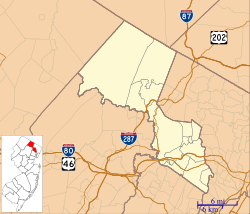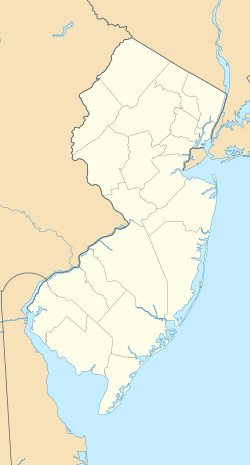Pietro and Maria Botto House facts for kids
|
Pietro and Maria Botto House
|
|
 |
|
| Location | 83 Norwood Street, Haledon, New Jersey |
|---|---|
| Built | 1908 |
| NRHP reference No. | 74001188 |
Quick facts for kids Significant dates |
|
| Added to NRHP | July 30, 1974 |
| Designated NHL | December 17, 1982 |
The Pietro and Maria Botto House is a special historic home located at 83 Norwood Street in Haledon, New Jersey. This house became famous because it was a meeting place for workers during the important Paterson Silk Strike of 1913. Leaders from the Industrial Workers of the World (IWW) union spoke to about 25,000 striking workers right from this house.
Contents
History of the Botto House
The Botto Family's New Home
Pietro Botto (born 1864) and Maria Boggio (born 1870) were a couple who came to the United States from Biella, Italy. They got married in 1885 and arrived in America in 1892 with their first daughter, Albina. For 15 years, they lived in West Hoboken, which is now Union City, New Jersey. During this time, they had three more daughters: Adelia, Eva, and Olga.
The Botto family worked hard and saved their money. In 1908, they were able to build their own home in Haledon. Their new house was big enough for their whole family. It also had three extra rooms upstairs that they rented out to earn more money.
Life at the Botto House
Pietro Botto and his daughters worked as weavers in the silk mills of Haledon. Maria Botto did "outwork," which meant she cleaned and fixed small flaws in finished silk fabric at home. She also cooked meals for boarders and other working men in her dining room during the week.
The Botto House was on a country hillside, close to a trolley line. This made it a popular spot, especially on Sundays and holidays. People would gather there to play bocce, enjoy card games, and eat the delicious food Maria and her daughters prepared.
A Place for Free Speech
In 1913, silk workers in Paterson went on strike because they wanted better pay and working conditions. The mayor of Paterson would not let the strikers gather in the city. So, a union leader named Big Bill Haywood asked Pietro and Maria Botto for help.
The Bottos invited the strike organizers to hold their meetings at their home in Haledon. Haledon was a different town, and its mayor, William Brueckman, was a socialist who supported the workers. From March until June 1913, the Botto House became the main meeting spot every Sunday for the strikers.
During this time, Maria kept the house running and fed the activists. Speakers like Upton Sinclair, Carlo Tresca, and Elizabeth Gurley Flynn spoke to the large crowds from the house's balcony or in front of it. Even though Pietro was not part of the strike, he and his daughter Eva were "blacklisted" after it ended. This meant they could not find work. Sadly, Maria became sick and passed away just two years after the strike.
Recognizing History
Because the Botto House was a safe place for workers to speak freely and gather, it was added to the New Jersey Register of Historic Places and the U.S. National Register of Historic Places in 1974. In 1982, it was named a National Historic Landmark. This was a very special honor, making it the first historic site in the nation to recognize the contributions of Italian Americans.
The American Labor Museum
In 1983, the Pietro and Maria Botto House opened its doors to the public as the American Labor Museum. This museum is a non-profit organization that teaches people about the history of workers, workplaces, and labor unions. It especially focuses on the different backgrounds of working people.
The museum has changing exhibits, rooms that look like they did in the early 1900s, and beautiful gardens. It also has a free library and offers lectures, poetry readings, and workshops for teachers.
Each year, the American Labor Museum gives out the Sol Stetin awards. These awards honor people who have done great things to improve the lives of working people. Some past award winners include:
- Mary Kay Henry
- John Nichols (journalist)
- Loretta Weinberg
See also




